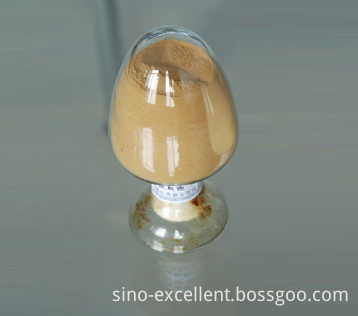1. Establishing a fish-blocking facility Before a reservoir of economic fishes is stocked, it is necessary to build a fish-blocking facility at all entrances and exits of the reservoir and to strengthen daily management and maintenance to prevent fish escape accidents. There are three types of fish-reserve facilities in the reservoir: fish-mesh-stopping facilities, electric-fish-blocking facilities, and bamboo-and-barrier-fishing facilities. The net barred fish facility has been widely used because of its advantages of good fish barring, simple equipment, low cost, convenient installation and management. The net length and net height of the intercepting fish net are both increased by 10-15% compared with the actual width and depth of the interception. The size of the net size is determined by the size of the stocking fish, and the horizontal shrinkage coefficient is generally taken to be 0.6-0.7. Usually, the pile type is used. And anchored two ways to install and fix. Electric fishing facilities are designed based on the principle that fish can avoid electricity. When the fish swims to the electric grid and encounters an electric field with a certain intensity, they will be stimulated by electricity to change their swimming direction and play a role in stopping the fish. Bamboo and wooden fences have the advantages of convenient materials acquisition, simple construction, and low cost. However, they cannot withstand the impact of large-flow floods and have poor safety performance. They are rarely used nowadays.
Second, economic fish stocking
1. Selection of stocking species. Most of the reservoirs in China have a large amount of plankton. Therefore, salmon is the main breeding object. In order to make full use of other bait resources, omnivorous grasshoppers, grasshoppers, and herbivorous grass carp, which mainly consist of benthic animals, can also be stocked. Oh, wait.
2. The specifications and quality of stocked fingerlings. The fish species in the reservoir are often stored in small reservoirs. If the specifications are small, they often swim in dense pools after entering the reservoir. They are difficult to eat, have poor feeding ability, and are slow to grow. At the same time, they are poorly adapted to changes in the external environment and are vulnerable to predation by ferocious fish. Therefore, the survival rate is low and the rate of withdrawal is not high, which directly affects the fish productivity of the reservoir. On the contrary, the specifications of the fish species will be larger, the above situation will obviously change, and the growth rate of large stocking specifications is fast, but the other The larger the size of fish species, the higher the required production cost. Therefore, various localities can make appropriate provisions according to their own conditions, the size of the reservoir and the degree of harm of ferocious fish. China's current requirements for fish species specifications are generally: 11.5-13.2cm, 13.2-14.8cm for grass carp, 6.6-8.3cm for carp and carp. The species of fish that have been put into reservoirs are required to have neat specifications, lively and lively, robust and disease-free.
3. Stocking density and mix ratio. Because large and medium-sized reservoirs are large in area, deep in water, large in storage capacity, and the ecological conditions of fish are extremely complex and difficult to control, they mainly depend on natural foods in the reservoir for extensive culture. The stocking densities and mix proportions are mainly determined by the type of nutrition in reservoirs. The eutrophic reservoir can hold 110 to 140 tails per acre, of which the squid accounts for 35-40%, the squid accounts for 50-55%, the grass, pupa, pupa etc. may account for 5-15%; the general nutrition reservoirs Mu can be stocked with 80-110 tails, among which squid accounts for 30-35%, pupa accounts for 55-60%, and grass, pupa, pupa etc. may account for 5-15%; oligotrophic reservoirs can hold 50-80 per mu. Among them, squid accounted for 25-30%, carp accounted for 60-65%, grasshoppers, crickets, etc. may account for 5-15%. For small reservoirs, because of their small size and convenient management of fish farming, water is not deep, which is conducive to the breeding of food organisms and the growth of fish. The ferocious fish population is small and easy to remove. Fish farming can be divided into "Roughly cultivated" and "closely packed" two ways. In the “dilute and extensive culture†method, 80 to 100 species of 13-14cm fish are stocked per acre, of which 40% are carp, 50% are carp, 4% are grass carp, and 3% are carp and octopus. For small-scale reservoirs with “closely packed, intensively-cultivated†types, the species, quantity, and mix-up ratio should be determined based on the amount of feed and fertilizer, the nutritional status of the reservoir water, and the managerial capacity of the producer. For other fish, 300-400 species of 13-14cm of fish are stocked per acre per year, 50% of which are earthworms, 30% are grasshoppers, 10% are grass carp, and 5% are carp and carp.
Second, economic fish stocking
1. Selection of stocking species. Most of the reservoirs in China have a large amount of plankton. Therefore, salmon is the main breeding object. In order to make full use of other bait resources, omnivorous grasshoppers, grasshoppers, and herbivorous grass carp, which mainly consist of benthic animals, can also be stocked. Oh, wait.
2. The specifications and quality of stocked fingerlings. The fish species in the reservoir are often stored in small reservoirs. If the specifications are small, they often swim in dense pools after entering the reservoir. They are difficult to eat, have poor feeding ability, and are slow to grow. At the same time, they are poorly adapted to changes in the external environment and are vulnerable to predation by ferocious fish. Therefore, the survival rate is low and the rate of withdrawal is not high, which directly affects the fish productivity of the reservoir. On the contrary, the specifications of the fish species will be larger, the above situation will obviously change, and the growth rate of large stocking specifications is fast, but the other The larger the size of fish species, the higher the required production cost. Therefore, various localities can make appropriate provisions according to their own conditions, the size of the reservoir and the degree of harm of ferocious fish. China's current requirements for fish species specifications are generally: 11.5-13.2cm, 13.2-14.8cm for grass carp, 6.6-8.3cm for carp and carp. The species of fish that have been put into reservoirs are required to have neat specifications, lively and lively, robust and disease-free.
3. Stocking density and mix ratio. Because large and medium-sized reservoirs are large in area, deep in water, large in storage capacity, and the ecological conditions of fish are extremely complex and difficult to control, they mainly depend on natural foods in the reservoir for extensive culture. The stocking densities and mix proportions are mainly determined by the type of nutrition in reservoirs. The eutrophic reservoir can hold 110 to 140 tails per acre, of which the squid accounts for 35-40%, the squid accounts for 50-55%, the grass, pupa, pupa etc. may account for 5-15%; the general nutrition reservoirs Mu can be stocked with 80-110 tails, among which squid accounts for 30-35%, pupa accounts for 55-60%, and grass, pupa, pupa etc. may account for 5-15%; oligotrophic reservoirs can hold 50-80 per mu. Among them, squid accounted for 25-30%, carp accounted for 60-65%, grasshoppers, crickets, etc. may account for 5-15%. For small reservoirs, because of their small size and convenient management of fish farming, water is not deep, which is conducive to the breeding of food organisms and the growth of fish. The ferocious fish population is small and easy to remove. Fish farming can be divided into "Roughly cultivated" and "closely packed" two ways. In the “dilute and extensive culture†method, 80 to 100 species of 13-14cm fish are stocked per acre, of which 40% are carp, 50% are carp, 4% are grass carp, and 3% are carp and octopus. For small-scale reservoirs with “closely packed, intensively-cultivated†types, the species, quantity, and mix-up ratio should be determined based on the amount of feed and fertilizer, the nutritional status of the reservoir water, and the managerial capacity of the producer. For other fish, 300-400 species of 13-14cm of fish are stocked per acre per year, 50% of which are earthworms, 30% are grasshoppers, 10% are grass carp, and 5% are carp and carp.
China professional manufacturer, produce and supply Panax Ginseng Leaf and Stem Extract; Panax Ginseng Flower Extract; Panax Ginseng Berry Extract; Panax Ginseng Root Extract; Korean Ginseng Extract; America Ginseng Leaf adn stem extract; America ginseng root extract,, meet CP, EP, USP standard.
Also can supply organic ginseng extract and low pesticide residue ginseng extract





Panax Ginseng Extract, Korean Ginseng Extract,America Ginseng Extract
Excellent Health Products Co.,Ltd. , http://www.sino-excellent.com